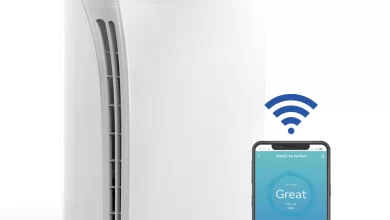High Blood Pressure – Hypertension Diagnosis and Treatments.

Everyone knows about hypertension, its risks, and its potential consequences, but not many people know that almost half of adults in the United States (47%, or 116 million) live with this disease. Even more so, nearly half of the said population are unaware of the existence of the said condition. Furthermore, it is also the dominant cause of early deaths across the globe.
The prime factor that facilitates the rapid spread of hypertension is our lifestyle. From smoking, drinking, and high salt intake, to lack of physical activity and obesity, it is what we do in our day-to-day lives, that has rendered us susceptible to impaired cardiovascular activity and subsequently elevated blood pressure levels.
How Is Hypertension Diagnosed?
Elevated blood pressure levels are an indication of the onset of hypertension. Its diagnosis is the same as taking the blood pressure reading at a hospital, clinic, or even at home. The diastolic and systolic pressure values then determine whether the individual is hypertensive or not. While both figures are equally important, the latter becomes slightly more crucial after the age of 50. The systolic blood pressure is the top number that measures the force that arteries experience when the ventricles contract to pump the blood through the entire body. On the other hand, the diastolic pressure is the bottom figure on the reading. It measures the force of blood the arteries experience when the heart relaxes, and the ventricles are refilled with blood.
How Many Types of Hypertension Do You Know?
While you may assume that any person with elevated blood pressure levels is hypertensive, it is not entirely true. There are four different types of hypertensive stages that are categorized according to blood pressure levels. Each stage requires a distinct treatment and management plan.
- Normal blood pressure – If the blood pressure is below 120/80 mm Hg
- Elevated blood pressure – if the systolic pressure ranges from 120-129 mm Hg with the diastolic pressure below 80mmHg. It is important to take medical assistance at this stage to prevent the further progression of the disease. However, if left unattended, the condition deteriorates to stage 1 and 2 hypertension.
- Stage 1 hypertension – when the systolic pressure varies from 130-139 mm Hg while diastolic pressure ranges from 80-89 mm Hg.
- Stage 2 hypertension – This is a much-severe condition in which the systolic pressure exceeds 140 whereas diastolic pressure is 90 mm Hg or higher.
- Hypertensive crisis – In this condition, there is an acute increase in blood pressure and target organ damage such as the kidney.
The Causes of Hypertension and Who Are At Risk?
The first step to lower blood pressure levels is to know the root cause. Since our lifestyle plays the most important role in the onset of hypertension specialist, certain amendments in our daily lives will acts as an efficient remedy as well.
A combination of factors is listed below that contribute to raising blood pressure levels in the body.
HEREDITARY: There are certain genes that pass on from generation to generation that render the body susceptible to elevated blood pressure levels.
AGE: Individuals above the age of 65 years old are at risk of hypertension
OBESITY: Increased body weight is significantly responsible to increase BP.
ALCOHOLISM: More than 2 drinks per day have been shown to cause elevated blood pressure levels.
SEDENTARY LIFESTYLE: Lack of physical exercise and stationary lifestyle also contributes to hypertension.
Non-Pharmacological Management of Hypertension
On contrary to conventional belief, you do not need to rely solely on medication to see a drop in blood pressure levels. Various lifestyle approaches can help maintain normal blood pressure and healthy life.
Exercise
We cannot emphasize the importance of exercise, enough, for the management of hypertension. Even 30 minutes of aerobic activity every day strengthens the heart, which helps pump more blood with less effort, as a result of which, there’s a considerable decrease in the force on the arteries. Following are physical activities that will help to control blood pressure
- 10-30 minutes of brisk walking
- Biking or stationary cycling for 30 minutes
- Hiking
- Treadmilling
- Weight training
- Swimming
For people with limited mobility, some certain gyms and communities render seated exercise classes and water aerobics.
Diet
Diet plays an important role to lower blood pressure levels. DASH or Dietary Approach To Stop Hypertension is an initiative by the U.S National Institutes of Health that promotes good cardiac health. Following are some dietary amendments the program recommends
- Intake of vegetables: green vegetables especially dark, leafy greens consists of nutrients essential for the functioning of the cardiovascular system. It is recommended to have at least 1-2 servings of vegetables per day.
- Cut down sugar intake: Added sugars significantly contribute to the onset of hypertension. If you have a sweet tooth, it is better to fruits such as apples, berries, and grapes to fulfill cravings rather than having cakes, chocolates, or other sweets.
- Keep an eye on alcohol consumption: While it is safe to consume alcohol in moderation, studies have shown the role of excessive drinking in increased blood pressure levels.
- Balance sodium intake: Sodium or salt plays a crucial role in elevating blood pressure. Therefore, it is important to aim for 2300 mg sodium per day to maintain hypertensive conditions.
Mental Health
You might not know it, but stress is perhaps, your biggest enemy. It works with adrenaline to put the body in fight or flight mode that elevates the blood pressure. Chronic stress and anxiety has shown to remarkably contribute to the onset of hypertension, and here’s what you can do about it;
- Seek professional help: There’s nothing than seeking a mental health professional to control your stress levels. A therapist will help you de-stress your routine and help make some lifestyle changes to improve your mental health status.
- Get enough sleep: Even though you might find it hard to fall asleep because of high-stress levels, a therapist will prescribe some medications and a routine that will help you fall asleep peacefully.
- Meditate: Meditation does not only help de-stress the body, but it also helps regular blood pressure levels.
- Take a break: For a significant percentage of people, work is the key source of stress. Therefore, taking a routine break from work also helps in reducing stress and blood pressure.
Quit Smoking
You might not know it, but even one cigarette temporarily increases blood pressure for a while. It is a major risk factor as it causes the accumulation of plaque in the arteries that constrict the blood vessels. Smoking cessation leads to an immediate improvement in hypertension, even if you’re smoking for a long time.
Lose Weight
An increase in blood pressure is often directly related to increases in body mass index (BMI). Therefore, a viable preventive and managing approach would be to lose weight with help of exercise and a healthy diet.
The Role of Primary Healthcare for The Management of Hypertension
While the importance of timely diagnosis and management of hypertension cannot be emphasized enough, fewer people discuss it with their internists at NOIP Internal Medicine Clinic. The main reason is the perception that only a specialized cardiologist can provide adequate treatment strategies. However, it is the primary healthcare facility and provider that acts as the first step for the diagnosis, treatment, management, and prevention of hypertension.






